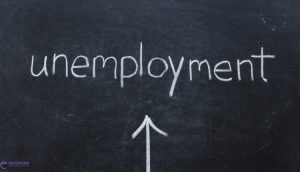This article is about solutions to lowering debt-to-income ratio to qualify for a mortgage. The debt-to-income ratio is the sum of the monthly minimum payments divided by the monthly gross income of the borrower. There are two types of debt-to-income ratios
- Front end debt to income ratio
- Back-end debt-to-income ratio
One of the frequently asked questions by our viewers and clients is do mortgage lenders look at front-end or back-end DTI? Ronda Butts, a senior loan officer at Gustan Cho Associates explains the front-end and back-end debt to income ratio as follows:< In the following paragraphs, we will cover and discuss lowering debt-to-income ratio to qualify for a mortgage.
What Is The Front-End and Back-End Debt-To-Income Ratio
The front-end debt-to-income ratio is also called the housing debt-to-income ratio. Front-end DTI is the principal, interest, taxes, and insurance. If the property has other expenses such as homeowners association dues and flood insurance, then the front-end DTI is the PITI plus the HOA and Flood Insurance divided by the borrower’s monthly gross income. The back-end debt-to-income ratio is the housing expenses plus any other monthly expenses divided by the borrower’s gross monthly income.
What Is The Maximum Debt-To-Income Ratio on FHA Loans?
FHA loans are the best mortgage loan program for borrowers with a high debt-to-income ratio. The maximum front-end debt-to-income ratio allowed by HUD on FHA Loans is 46.9% to get AUS Approval on AUS. The maximum back-end debt-to-income ratio allowed on FHA Loans is 56.9% to get an approve/eligible per AUS. Borrowers need to meet the above debt-to-income ratio requirements in order for automated approval.
Front-End Debt-To-Income Ratio

The front-end debt-to-income ratio cannot exceed 46.9%, even though borrowers may not have any other monthly minimum payments. For example, here is a case scenario. If the borrower has no other expenses except for the proposed housing payment. But the debt-to-income ratio exceeds 46.9%. The borrower will not be able to qualify for an FHA Loan. If the housing payment is $1,000. The borrower’s income is $2,000. The borrower has no other monthly minimum debt payments.
The borrower’s front and back-end debt-to-income ratios are at 50%. Even though the back-end debt-to-income ratio is below 56.9%, the borrower will not be eligible for FHA Loan. This is due to the fact that the front debt-to-income ratio exceeds the maximum front-end debt-to-income ratio of 46.9% allowing for an automated AUS Approval.
Solutions To Lowering Debt-To-Income Ratio By Buying Dow Rate
Other solutions to lowering debt-to-income ratio are by buying down rates with discount points. For borrowers with front-end debt-to-income ratios higher than the 46.9% allowed, there are possible solutions for Lowering Debt To Income Ratio. Borrowers can buy the rate down by paying points. Lower rates lead to lower housing payments. Another solution to Lowering Debt-To-Income Ratio is to change the FHA loan term to a 7-year adjustable-rate mortgage versus a fixed-rate mortgage.
Solutions To Lowering Debt-To-Income Ratio By Changing To ARM
A frequently asked question often get asked is how can I lower my debt-to-income ratio for a mortgage? Mike Gracz, a senior loan officer at Gustan Cho Associates suggests solutions to lowering debt-to-income ratio by doing the following: Solutions to lowering debt-to-income ratio can be done by following steps:
Adjustable-rate mortgages often have much lower interest rates than 30-year fixed-rate mortgages. Another solution may be to shop for homeowners insurance. Shop for lower insurance premiums. Or change homeowners’ policy to get the bare minimum required by the lender to lower homeowners insurance premiums.
Conventional Versus FHA Loan Debt-To-Income Ratio Guidelines
Borrowers with no other debts besides proposed housing payments and higher credit scores may see if they can qualify for a conventional mortgage versus an FHA loan. This is due to the fact that FHA has a very steep annual mortgage insurance premium. Conventional loan programs require a minimum of 5% down payment on a home purchase versus FHA’s 3.5% minimum down payment requirement.
How Mortgage Insurance Affects Debt-To-Income Ratio
But the private mortgage insurance on a conventional loan can be substantially lower for higher credit score borrowers than FHA MIP. There are lender-paid mortgage insurance conventional loan programs, called LPMI, where there is no private mortgage insurance required on conventional loans.
Non-Occupant Co-Borrowers As Solution To High Debt-To-Income Ratio

If borrowers have explored all solutions for lowering debt-to-income ratios and cannot find a solution, then the last resort would be to get a non-occupant co-borrower. FHA allows multiple non-occupant co-borrowers. Non-occupant co-borrowers need to be a family member and/or relative related to borrowers by blood, law, or marriage. Non-Occupant co-borrowers help boost borrowers’ income by lowering debt-to-income ratios.
Related> Too much debt for a mortgage?








